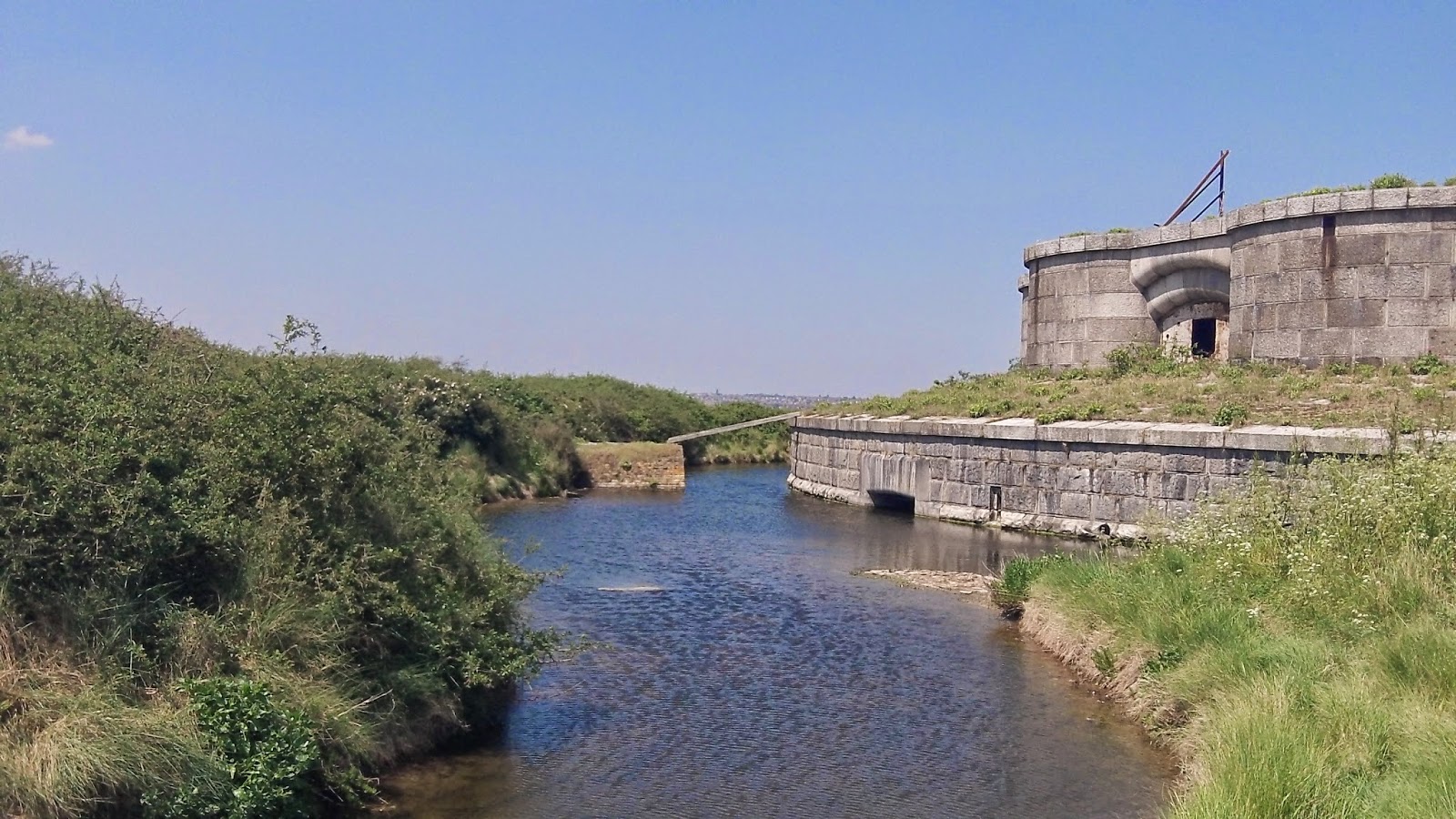A gentle Spring canoe-sailing trip down the upper reaches of the Dart Estuary from Totnes to Dittisham
The first proper sail of the year took me to Devon and the Dart Estuary. On alternative weekends the tides in the Dart will either be low or high tide around midday. On low tide weekends its ideal for launching on Dart sailing with the ebb tide to lower reaches of the estuary or perhaps to its mouth, and then one can either stop in a pub or continuing out to sea to wait for the tide to turn, and then you can use the flood tide to bring you back to the launch point rather effortlessly, even if there is little wind.That makes for a good full day out on the water. On the weekends when the tide is high at lunchtime its slightly more difficult to make a full day of it on the Dart. In the mornings the tide wants to take you higher up into the Dart, and for craft propelled by sail or paddle there is an effective tidal gate to the passage down to the lower reaches at the anchor stone just below Dittisham where the estuary is very narrow.
On these weekends I find its better to launch in the upper part of the estuary at Totnes and make a leisurely one way trip down to Stoke Gabriel or Dittisham.
 |
| On the slipway at Totnes, ready to launch the recently named 'EVE' |
 |
| Heading out of Totnes on the Home reach |
This part of the Dart is tricky to sail, the wind will follow the estuary as it winds through steep hills , often putting the wind on the nose or casting complicated and counter intuitive wind shadows on the way. The secret is to not worry about too much about it; just enjoy the scenery and take the sailing opportunities when they arise... and be ready with the paddle.
 |
| Looking back to the fleshpots of Totnes |
For about a mile from Totnes the river runs fairly straight in a South Easterly direction. Once away from the town the river valley opens up a little on the right hand side and the wind altered from the South West to the West, allowing me to gently reach towards Sharpham
 |
| A bit of decent wind....for a while. |
There are four significant bends in the river which wind you past Sharpham and Asprington and out onto the more open part of the Dart estuary.
Its a lonely part of the river at most times, the hills tighten in on the river and the view of fields gives way to steeply sided valleys on either side, densely covered in oak trees, that dip their branches into the water at high tide.
Sharpham House comes into view on the right bank, a sturdy Georgian pile with a picturesque boat house nestled among the oaks trees.
 |
| Sharpham Boat House |
 |
| Primeval vibe of the upper Dart |
About from these few intrusions of human activity parts of the Dart take on a primeval character,its easy to imagine you're traveling in virgin jungle territory. I did see another canoe sailor at this point, head in the opposite direction;they were on a sit on top with a homemade sail and no leeboard, and their progress against the ebb tide seemed slow. I was tacking across the river at this point so our paths didn't cross for a chat.
The last bend in these series reveals Duncannon, historically the home to the Dart salmon fishermen
 |
| Duncannon |
Once past Duncannon the Dart dramatically opens up; the hills recede a little and the water widens to half a mile of so stretching away for a couple of miles down toward Dittisham. An expectation of better, more constant winds and a chance for so proper sailing is felt.
 |
| The open part of the dart! |
But sometimes not realised! However after a becalmed start the wind in this open part of the Dart did fill in, Soon I was passing by the little creek leading to Stoke Gabriel
 |
| Passing Stoke Gabriel |
 |
| Looking Down towards Dittisham |
As ever , you can see Dittisham long before you can reach it , the village sits on top of a bend in the estuary and only comes down to the water on the far side.
 |
| Getting Closer |
 |
| Slip way at Dittisham |
There's a old slip that is ideal for landing a sailing canoe just past the jetty at Dittisham. I land there and headed for the pub and wait for my Mum to arrive with the transport!
During this trip I was wearing a pair of Palm dry trouser for the trip. they are great when a full dry suit isn't necessary, they are very well made, with additional protection on the seat and knees however they have no socks just ankle seals.(you can see them in the first pic of this blog) I was wearing a pair of sealskin waterproof socks and my normal typhoon rock boots. But even in May my feet became cold during the trip . I changed into sandals and headed for a pint. It was quiet this early in the season and I managed to get a seat by the window overlooking the river. I decided then and there I needed a pair of fully waterproof launch trousers to keep my feet dry. I subsequently have purchased a pair of Kokatat Tempest trousers which have been brilliant: strong but light and no more wet feet! It was a pleasant and afternoon sail and a gentle introduction to Eve of saltwater.
 |
| View from the Pub . |
 |
| The view down river toward the Anchor Stone. Wet socks=No fun. |






















































